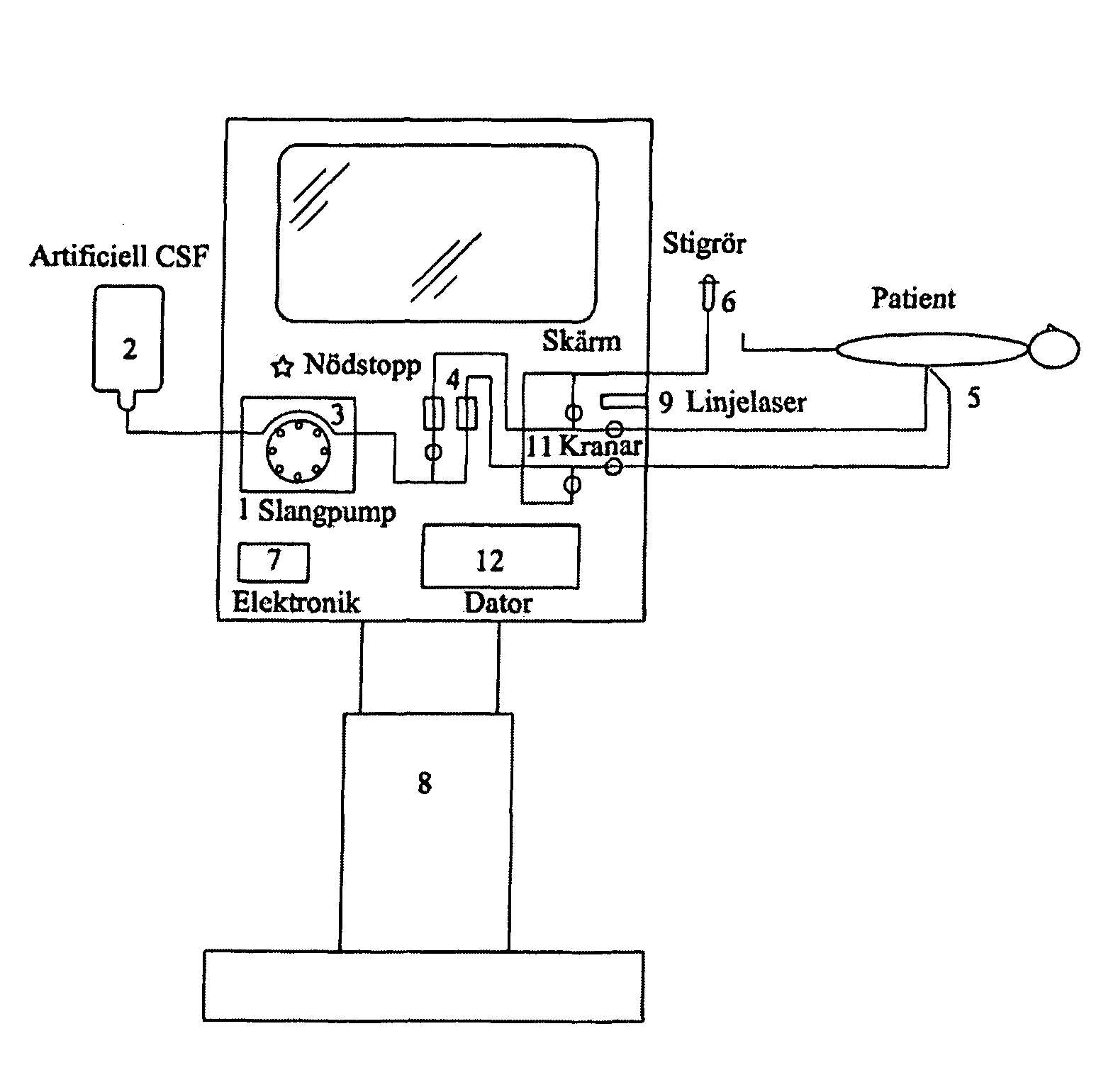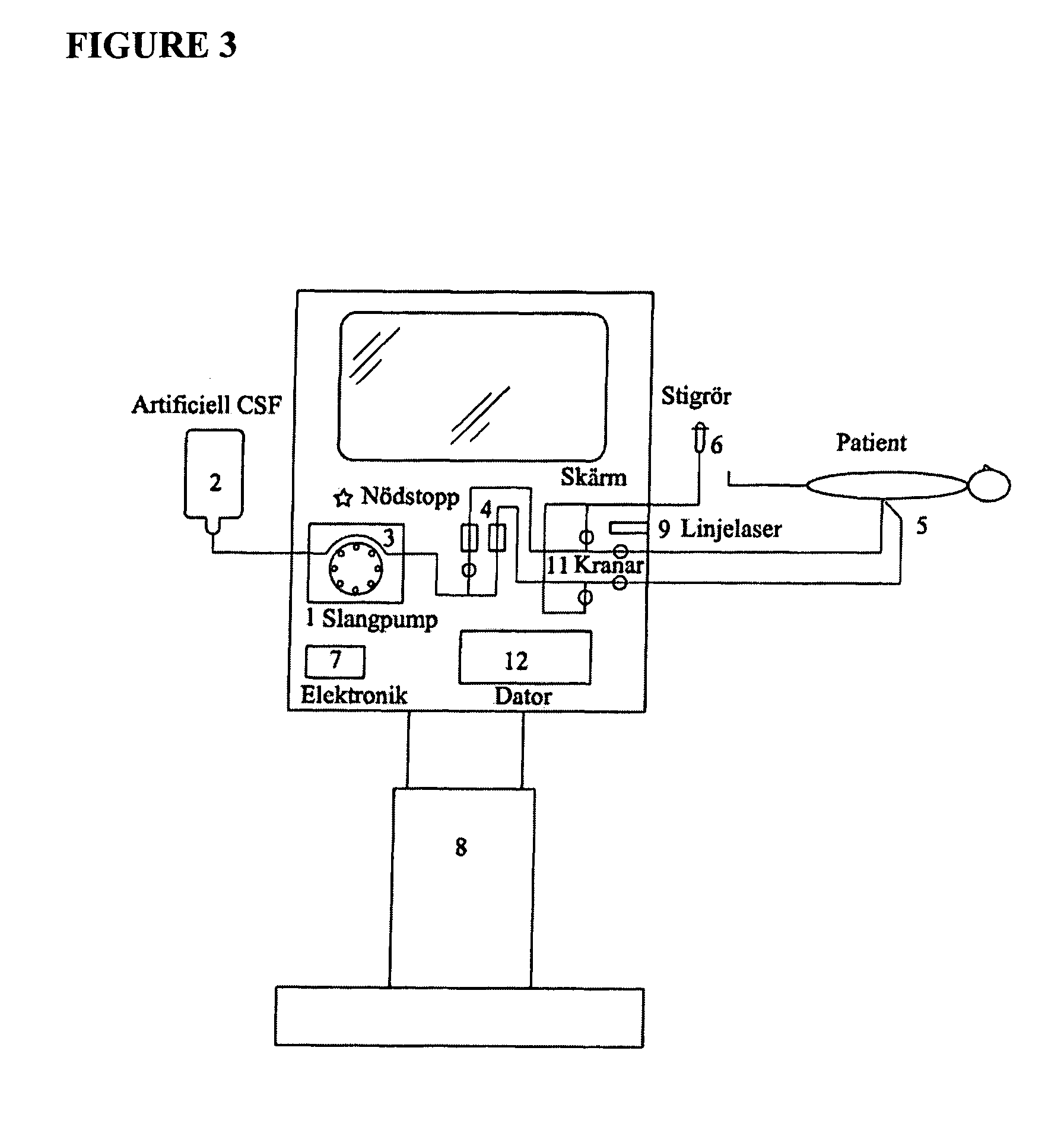Optimization of hydrocephalus shunt settings
a technology for hydrocephalus and shunts, applied in the direction of wound drains, movable spraying devices, intravenous devices, etc., can solve the problems of inability to account for differences inferred by individual patients and their natural pressure fluctuations, and achieve optimal opening pressure, improved and more accurate
- Summary
- Abstract
- Description
- Claims
- Application Information
AI Technical Summary
Benefits of technology
Problems solved by technology
Method used
Image
Examples
example 1
Use of CODMAN® HAKIM® Programmable Valve System
[0045]The CODMAN® HAKIM® Programmable Valve System (Codman Inc., 325 Paramount Drive, Raynham, Mass. 0276, USA) enables surgeons to pre-select one of 18 different pressure settings between 30 mm and 200 mm H2O. Given the adjustable nature of this shunt, it may be used in conjunction and in vivo with the invented method of optimizing shunt settings herein. Surgeons change the opening pressure of the valve through the use of an externally applied, codified magnetic field. The valve contains a ball and spring mechanism that sits atop a rotating spiral cam that contains a stepper motor. When the surgeon applies a specific magnetic field to the stepper motor, the cam turns slightly, increasing or decreasing the tension in the spring and ball, which changes the opening pressure of the valve.
For a patient, the in vitro shunt opening pressure was set to 1.5 kPa (kilopascal), and it was determined during the postoperative CSF dynamical examinati...
example 2
Use of SOPHY® Adjustable Pressure Valves
[0046]Sophysa USA, Inc. (303 S Main Street, Crown Point, Ind. 46307, USA) was a pioneer in adjustable valves by launching the first adjustable pressure valve in 1985. More than 55,000 SOPHY® Adjustable Pressure Valves were implanted in patients throughout the world between 1985 and 2003. SOPHY® Adjustable Pressure Valves provide a range of 8 pressure settings, from 30 mm to 200 mm H2O. The SOPHY® Adjustable Pressure Valve also uses a ball and spring design. The spring is attached to a magnetic rotor whose position can be non-invasively altered using an adjustment magnet. Given the adjustable nature of this shunt, it may be used in conjunction and in vivo with the invented method of optimizing shunt settings herein.
[0047]For a patient the in vitro shunt opening pressure was set to 1 kPa, and it was determined during the postoperative CSF dynamical examination that the resting pressure of the patient was 2 kPa and the in vivo shunt opening press...
example 3
Use of
[0048]The PS Medical Strata valve (Medtronic Inc., 710 Medtronic Pkwy, Minneapolis, Minn. 55432, USA) is an adjustable flow control valve in which the resistance properties of the valve can be changed non-invasively by the caregiver. It is designed to minimize overdrainage of cerebrospinal fluid (CSF) and maintain intraventricular pressure (IVP) within a normal physiologic range, regardless of patient position. The normally closed Delta chamber mechanism opens in response to positive ventricular pressure. Working with the ball and spring valve, this mechanism minimizes overdrainage by utilizing the principle of hydrodynamic leverage. Given the adjustable nature of this shunt, it may be used in conjunction and in vivo with the invented method of optimizing shunt settings herein.
[0049]For one patient, the in vitro shunt opening pressure was set to 2 kPa, and it was determined during the postoperative CSF dynamical examination, using the CELDA™ instrument, that the resting pressu...
PUM
 Login to View More
Login to View More Abstract
Description
Claims
Application Information
 Login to View More
Login to View More - R&D
- Intellectual Property
- Life Sciences
- Materials
- Tech Scout
- Unparalleled Data Quality
- Higher Quality Content
- 60% Fewer Hallucinations
Browse by: Latest US Patents, China's latest patents, Technical Efficacy Thesaurus, Application Domain, Technology Topic, Popular Technical Reports.
© 2025 PatSnap. All rights reserved.Legal|Privacy policy|Modern Slavery Act Transparency Statement|Sitemap|About US| Contact US: help@patsnap.com



